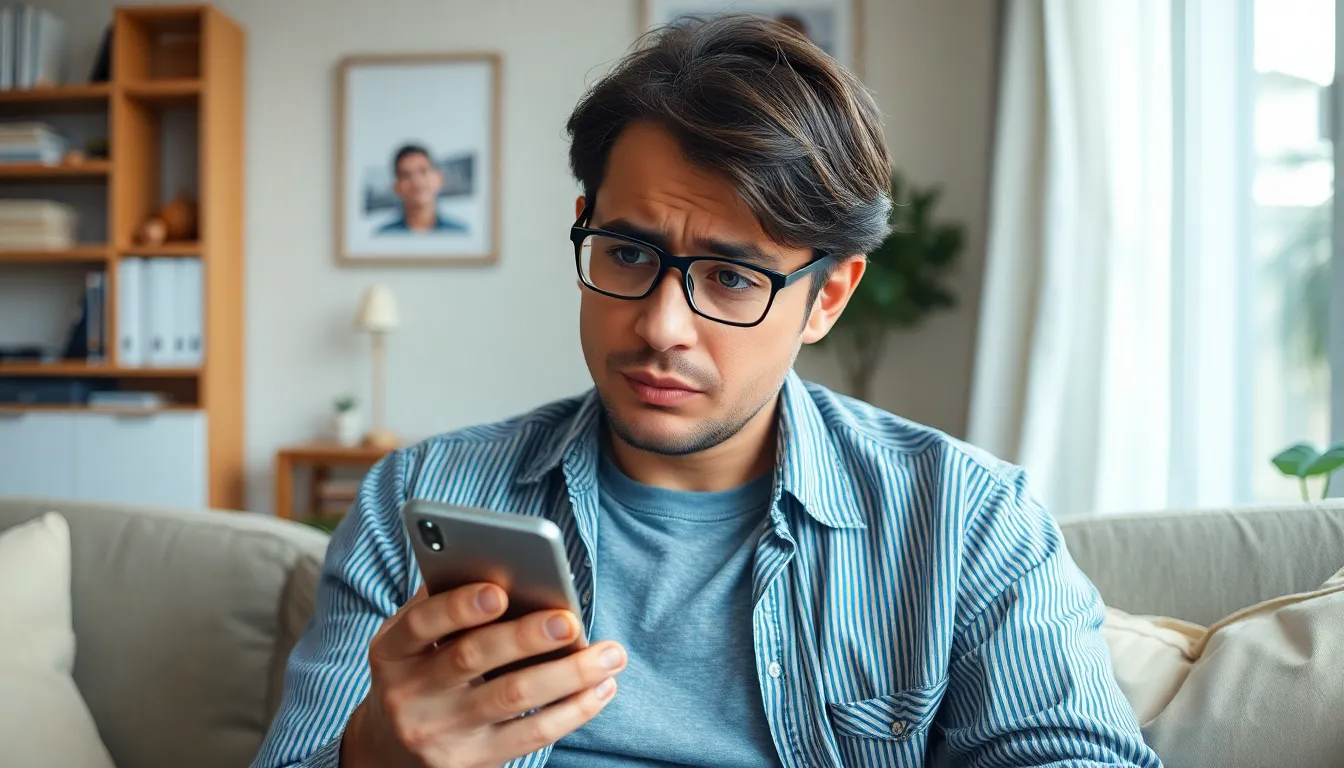Table of Contents
ToggleEver found yourself staring at your iPhone, finger hovering over the screen, wondering how many wrong passcode attempts it takes before your trusty device throws in the towel? It’s like playing a high-stakes game of “guess the code,” but with the added pressure of your phone potentially locking you out.
Understanding iPhone Security Features
iPhone security features protect user data from unauthorized access. Users rely on various mechanisms to ensure their information remains secure.
The Role of Passcodes
Passcodes serve as the primary line of defense for iPhones. Each user sets a unique code that guards against unauthorized access. This combination of numbers or characters prevents others from unlocking the device. In cases where someone forgets their passcode, recovery becomes difficult without the right steps. To enhance security, Apple often updates passcode requirements, urging users to create complex codes.
Attempts Before Lockout
Users face a limit on the number of passcode attempts for security reasons. After six incorrect entries, the device becomes disabled for one minute. Each subsequent failed attempt increases the lockout duration. For example, after a second set of six incorrect entries, the lockout extends to five minutes. Eventually, after ten unsuccessful attempts, the iPhone disables all access. Such measures deter attempts to guess the passcode, maintaining strict security.
What Happens When the iPhone Is Disabled?

When an iPhone is disabled, users cannot access their device until it is unlocked. This security measure ensures protection against unauthorized access.
Duration of Disabled State
The disabled state lasts for specific durations based on the number of incorrect passcode attempts. After the sixth failed entry, the iPhone locks for one minute, increasing with each subsequent attempt. For instance, after the seventh incorrect entry, the lockout duration becomes five minutes. Continuing this pattern, the device locks for fifteen minutes after the eighth attempt and thirty minutes after the ninth. After ten failed attempts, the iPhone becomes permanently disabled until restored via a computer. Users may find these delays frustrating, but they serve to bolster security.
Data Protection Concerns
Data protection is a primary concern for iPhone users. iPhones utilize encryption to safeguard user information, requiring the correct passcode for access. If someone cannot remember the passcode after several attempts, potential data loss occurs. iOS features, like Data Erase, can also wipe the device after ten failed login attempts. This measure enhances protection, ensuring that sensitive information remains secure. Users must prioritize remembering their passcodes or utilize password management solutions to prevent device lockout.
Common Scenarios Leading to iPhone Lockout
Several common scenarios can lead to an iPhone lockout. Users should recognize these situations to avoid frustration.
Forgotten Passcodes
Forgetting a passcode is a frequent issue. Many users may set complicated codes, making them difficult to recall. An incorrect guess after six attempts results in a one-minute lockout. After the seventh failed attempt, the duration extends to five minutes, escalating further with each wrong entry. Losing access for longer periods can disrupt daily activities. Ensuring that passcodes are memorable or recording them securely helps mitigate this problem.
Multiple Account Attempts
Users often face lockouts after attempting to access multiple accounts. Trying various passcodes can mistakenly trigger the security lockout. After six incorrect passcode entries, the iPhone locks for one minute, then five minutes after the seventh attempt. Persistence without success leads to long delays. Some users may forget which account they are trying to access, compounding the issue. To prevent this, keeping track of account details and using a password manager can simplify access while reducing the risk of lockouts.
How to Avoid iPhone Lockout
Avoiding iPhone lockout significantly reduces frustration and data loss risk. Users can employ effective strategies to maintain access to their devices.
Best Practices for Password Management
Setting a memorable passcode remains essential for iPhone security. Users should opt for codes that combine familiarity with complexity, enhancing both recall and protection. Documenting passcodes securely in a password manager provides a reliable backup, preventing total lockout. Regularly updating passcodes can strengthen device security, ensuring that unauthorized access remains unlikely. Utilizing hints or related phrases can also aid memory retention. Users must remember the importance of balancing security and usability by selecting codes that are difficult to guess yet easy to remember.
Using Face ID and Touch ID
Utilizing Face ID and Touch ID streamlines access and reinforces security. These biometric features provide a quick alternative to traditional passcodes while maintaining a high level of protection. Enabling Face ID or Touch ID offers convenience, especially in scenarios where users frequently unlock their phones. With biometric authentication, device users can avoid numerous passcode attempts, significantly reducing the risk of lockout. These technologies enhance security since facial recognition and fingerprint scanning remain difficult to replicate. Users benefit from integrating Face ID or Touch ID for daily use, ensuring seamless access without sacrificing protection.
Understanding the limitations on passcode attempts is crucial for iPhone users. With only six incorrect entries allowed before the device locks for increasing durations, users must be cautious. The potential for permanent lockout after ten failed attempts highlights the importance of remembering passcodes.
Incorporating strategies like using memorable passcodes or password managers can significantly reduce the risk of lockouts. Additionally, utilizing biometric options like Face ID or Touch ID offers a convenient and secure alternative for accessing devices. By prioritizing these practices, users can ensure their iPhones remain accessible while maintaining robust security.







